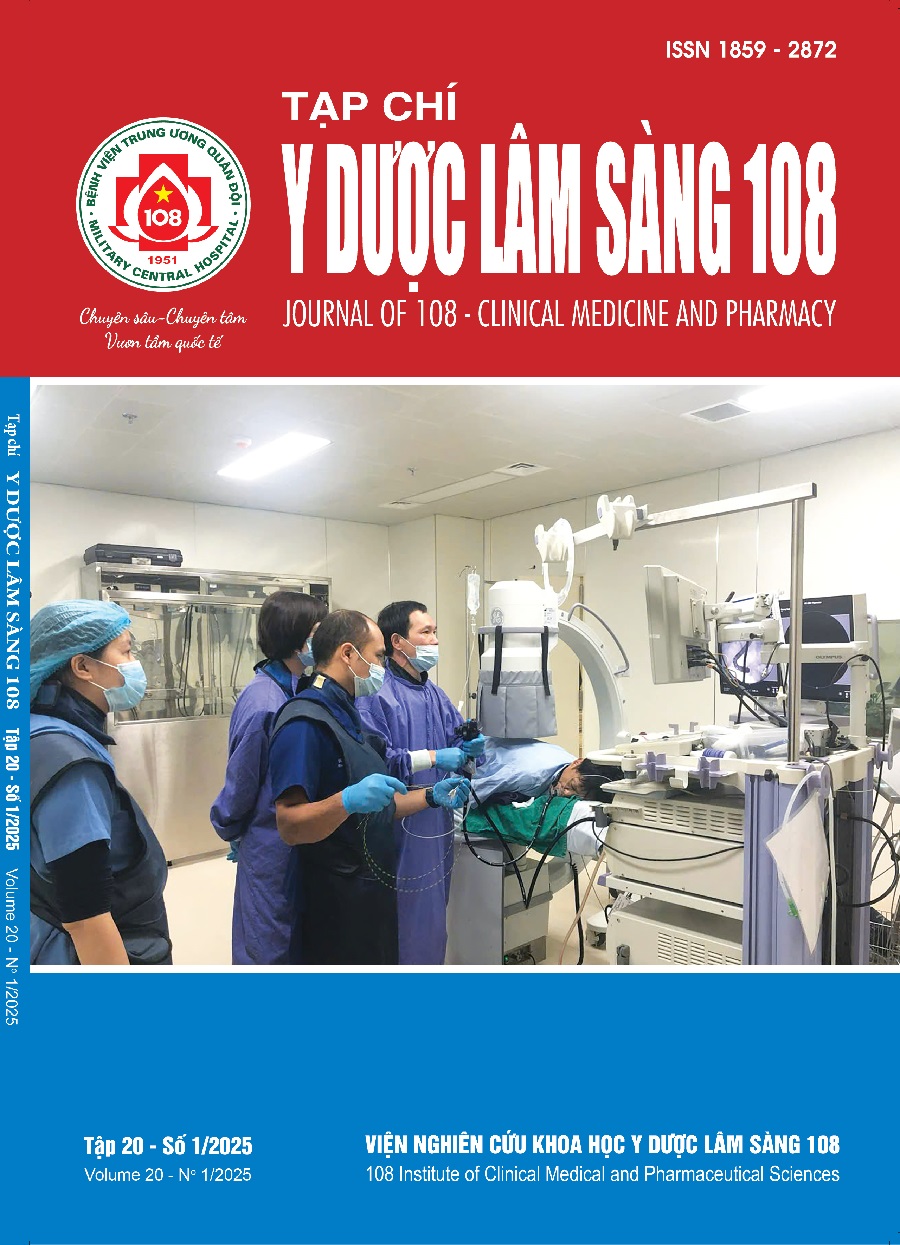Implementing the integrated practice unit model for comprehensive stroke care at General International Hospital Vinmec Times City
Main Article Content
Keywords
Abstract
Objective: To evaluate the effectiveness of implementing the integrated practice unit (IPU) model in providing comprehensive stroke care at Vinmec Times City General International Hospital from January 2023 to September 2024. Subject and method: We conducted a controlled trial. The study group (Group NC) consisted of stroke patients admitted to Vinmec hospital and treated and managed according to the IPU model. The historical control group (Group C) consisted of stroke patients who were previously admitted and treated according to the traditional approach. The effectiveness of the application is assessed using quality indicators such as process, outcome, and patient perspective. Result: Quality indicators in the study group (NC group) showed that the compliance rate with the Clinical Pathway for diagnosis and treatment of acute stroke was 91.3%, the "door-needle" time for patients receiving thrombolytic drugs was 30.5 ± 8.3 minutes, the rate of patients assessed for functional recovery within 48 hours was 92.5%, the rate of stroke patients receiving a swallowing function screening test was 93.9%, the rate of discharged patients who were examined and consulted on a rehabilitation plan at the time of discharge was 75%, the rate of stroke patients who arrived early (<4.5 hours) and were discharged with mRS < 3 was 48.1%, the rate of patients who returned for a follow-up visit after 1 month was 52.8%. These indicators in the control group (group C) were: 72.3%, 42.5 ± 10.3, 62.3%, 73.4%, 32.1%, 34.7%, 35.8%, respectively. The difference was statistically significant with p<0.05. Conclusion: Utilizing the IPU model in stroke patient care enhances the quality of treatment during the acute phase, reduces emergency intervention times, improves adherence to treatment regimens, conducts comprehensive patient assessments to prevent complications, and enhances the recovery potential of stroke patients.
Article Details
References
2. National Committee for Quality Assurance [internet]. Integrated care for people with Medicare and Medicaid: A roadmap for quality. 2013 Mar 5 [cited 17 Sept 2015].http://thescanfoundatiion.org/national-committee-quality-assurance integrated-care-people-medicare-and-medicaid-roadmapquality.
3. Zhang J, Gu LL, Xu Y, Zhao BB, Li D, Xiao C (2022) Integrated Medical Care and the Continuous 4C Nursing Model to Improve Nursing Quality and Clinical Treatment of Patients with Acute Stroke: Based on a Retrospective Case-Control Study. Contrast Media Mol Imaging: 4810280.
4. Porter ME, Teisberg EO (2026) Redefining health care: Creating value-based competition on results. Boston, Massachusetts: Harvard Business School Press.
5. Bélanger A, Beaudet L, Lapointe T, Houle J (2024) Clinical and organisational quality indicators for the optimal management of acute ischaemic stroke in the era of thrombectomy: A scoping review and expert consensus study. BMJ Open 14(2): 073173.
6. Jayakumar P, Mills Z, Triana B et al (2023) A Model for Evaluating Total Costs of Care and Cost Savings of Specialty Condition-Based Care for Hip and Knee Osteoarthritis in an Integrated Practice Unit. Value Health 26(9): 1363-1371.
7. Tummers JF, Schrijvers AJ, Visser-Meily JM (2012) Economic evidence on integrated care for stroke patients; a systematic review. Int J Integr Care 12:e193. doi: 10.5334/ijic.847.
 ISSN: 1859 - 2872
ISSN: 1859 - 2872
